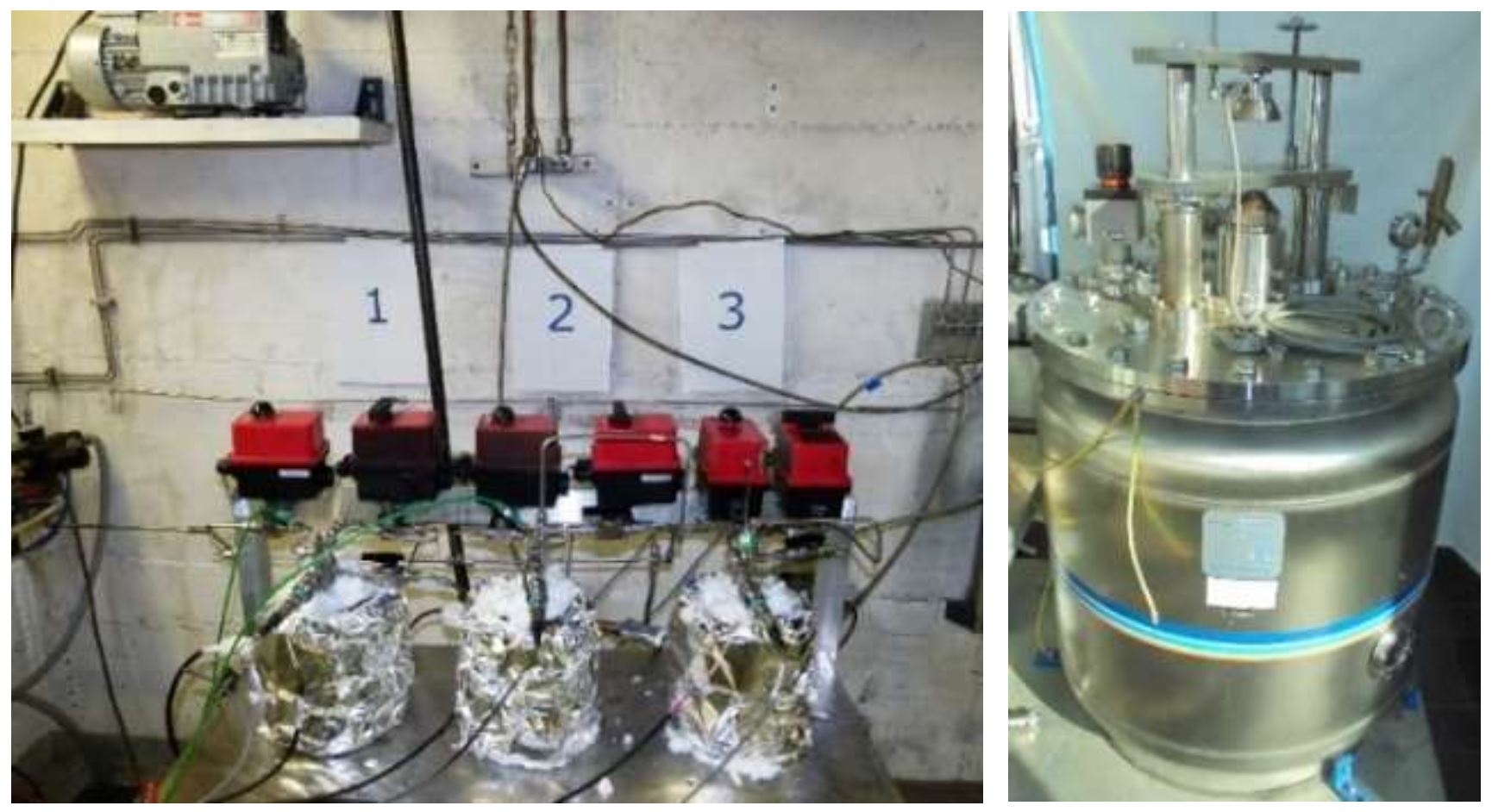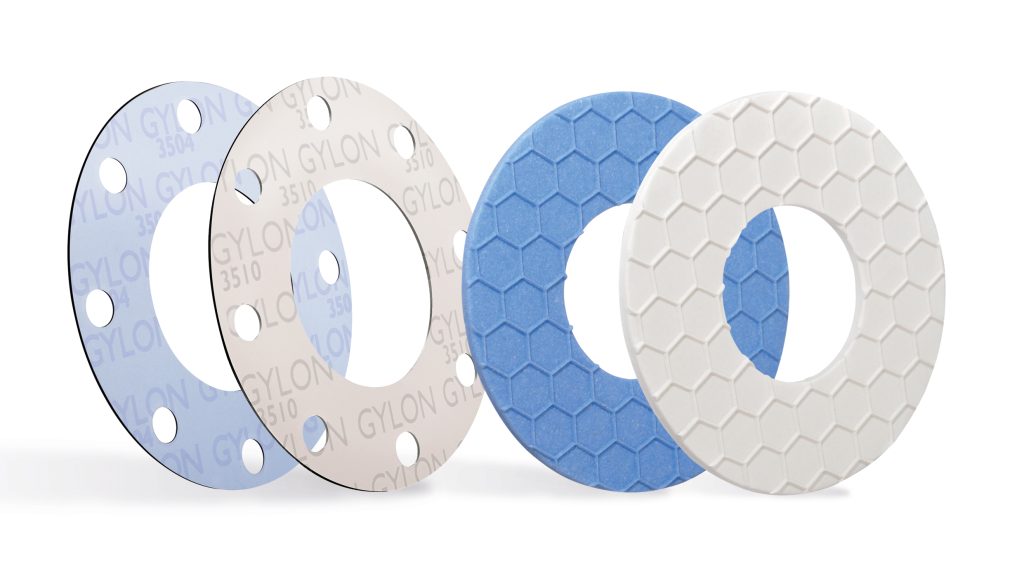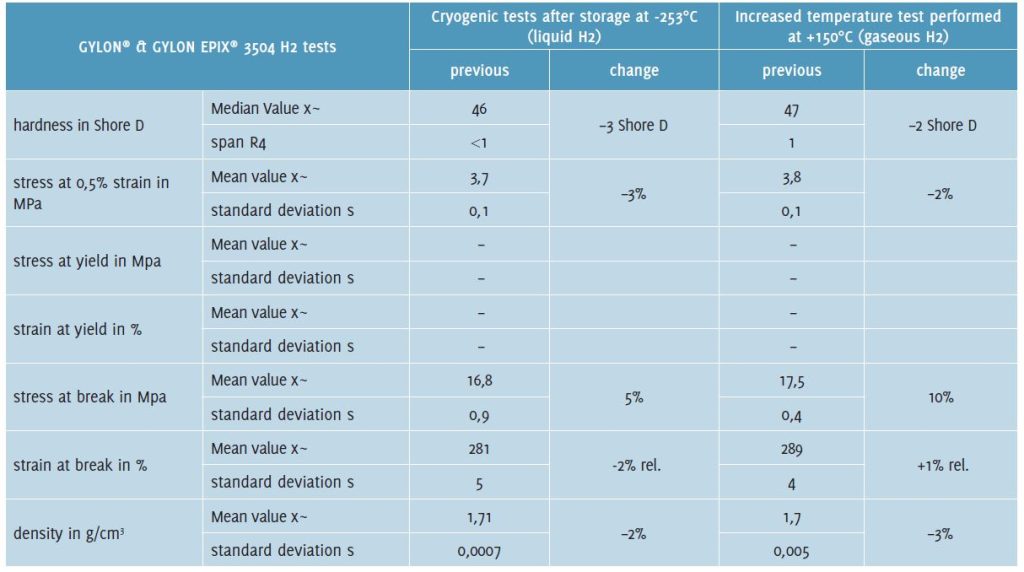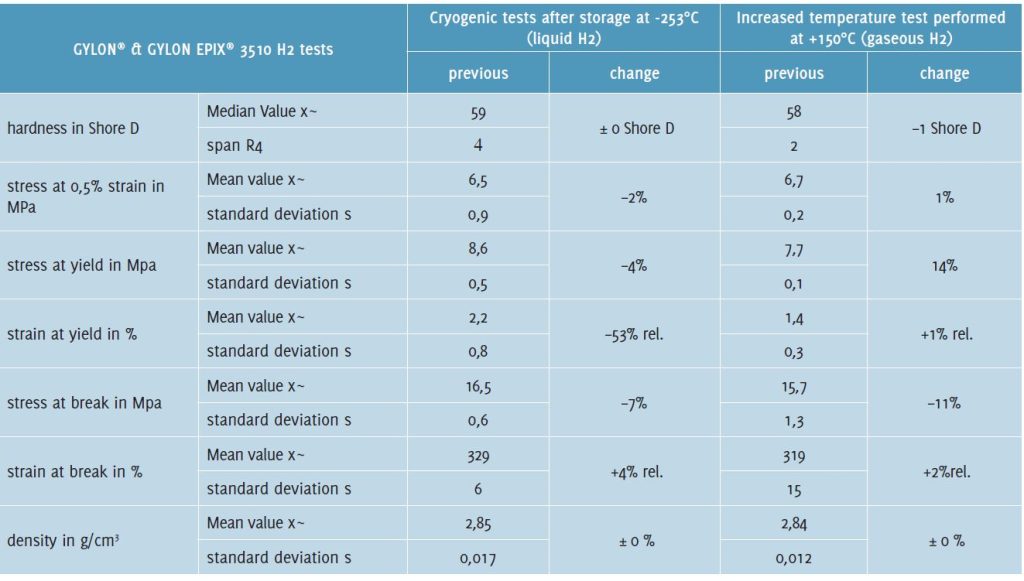This article investigates the performance of modified, calendered PTFE gaskets in cryogenic and gaseous hydrogen environments. The results demonstrate that these gasket materials maintain their mechanical properties and exhibit exceptional leak tightness, surpassing industry standards and proving their suitability for use in a wide range of hydrogen applications.
By Ralf Kulessa, Senior Application Engineer, Garlock GmbH

As the world moves towards a hydrogen-based energy future, it is crucial to understand how sealing materials, such as PTFE gaskets, perform under various hydrogen environments. This article presents the findings of a study conducted by Garlock GmbH and the Federal Institute for Materials Research and Testing (BAM) in Berlin, which investigated the changes in modified, calendered 3rd generation PTFE gaskets under cryogenic and gaseous hydrogen conditions. The study aimed to answer key questions about the materials’ performance and suitability for use in hydrogen applications.
Hydrogen (H2) plays a crucial role in energy transition and future technology. In Germany, hydrogen falls under the scope of the Technical Instructions on Air Quality Control (TA-Luft), which sets limit values for substances that are harmful to humans or the environment.
Requirements for sealing materials in hydrogen applications
Sealing materials used in hydrogen applications must provide mathematical proof of technical tightness according to VDI2290 and EN 1591-1 for round flange connections. This requires determining the EN13555 characteristics of the gasket materials, such as creep at temperature and maximum tolerated surface pressure.
Modified, calendered 3rd generation PTFE gasket materials have EN13555 characteristics and are frequently used for media subject to TA-Luft.
These materials are suitable for applications involving emissions or substances that are harmful to humans or the environment and are therefore subject to the limit values specified in the TA-Luft.
Research questions
This study aims to investigate the performance of modified, calendered 3rd generation PTFE gaskets in cryogenic and gaseous hydrogen environments. The following questions will be addressed:
a) How do these gaskets change under the influence of cryogenic H2 in terms of hardness, tear strength, elongation at break, and density?
b) How do these gaskets change under the influence of gaseous H2 at 150°C in terms of the same properties?
c) Do these gaskets achieve the same technical tightness in an H2 environment as when sampled with helium?
These GYLON® materials already have shown good results in technical tightness tests with helium. However, prior to this study, no tests had been carried out regarding changes in the materials in cryogenic or higher temperature gaseous H2 environments.

Testing procedure
The GYLON® & GYLON EPIX® gasketing styles mentioned in the previous section were sent to the Federal Institute for Materials Research and Testing (BAM) in Berlin for testing.
In Germany, any material that encounters a reactive substance capable of creating an explosive atmosphere must first be sampled by BAM. This requirement applies not only to hydrogen but also to other substances such as liquid or gaseous oxygen.
Storage conditions and material analysis
The GYLON® & GYLON EPIX® gasketing styles were subjected to the following storage conditions:
- Storage for more than one week below 150°C at 100 bar in hydrogen gas
- Storage for at least 6 days in liquid hydrogen under cryogenic conditions
After storage, the gasket materials were analyzed to determine their:
- Hardness
- Tensile strength
- Elongation at break
- Density
The values obtained after H2 storage were then compared to the previously determined values to assess any changes in the material properties.
Results of material change
Table 1 summarizes the changes in the material properties of GYLON® & GYLON EPIX® Style 3504 after storage in liquid H2 at -253°C for 6 days. Several samples were analyzed over a period of 2 hours after storage.
The changes determined after storage in the cryogenic range are almost within the range of the measurement uncertainties.
A decrease in hardness is not considered negative, as it allows the gasket to better adapt to the flange surface.
Measurement uncertainties are as follows: Stress measurements: ±0.4MPa; Elongation measurements: ±8% (absolute); Hardness measurements: ±0.4Shore; Density measurements: ±0.001g/cm3; Change in tensile strength: ±4% (relative); Change in elongation at break: ±2% (relative); Change in hardness: ±0.8Shore Table 2 presents the largest deviations in the material properties of GYLON® & GYLON EPIX® Style 3504 after storage in gaseous H2 at +150°C for 7 days. Several samples were analyzed over a period of 2 hours after storage.
Even under gaseous H2, the changes in the material properties of GYLON® & GYLON EPIX® Style 3504 are almost within the range of the measurement uncertainties (see previous page). Only an increase in tensile strength shows a deviation of +10%.
However, this increase in tensile strength is not a disadvantage and is a known behavior for all PTFE materials. The EN13555 characteristic values account for this by specifying a lower QSmax for PTFE gaskets at higher temperatures.

Results for GYLON® & GYLON EPIX® Style 3510
Several samples of GYLON® & GYLON EPIX® Style 3510 were analyzed over a period of
2 hours after storage at -253°C for 6 days. The deviations in material properties are summarized under “change” in Table 2. The results of the mechanical property tests demonstrate that GYLON® & GYLON EPIX® 3510 products can be used in H2 environments without any negative effects or damage. GYLON® products have been used reliably as a sealant in many H2 applications since the 1980s, providing many years of experience.
Hydrogen: A normal medium
The results of the material property tests and the extensive experience with GYLON® products in H2 applications since the 1980s allow us to conclude that hydrogen is not a special medium, but rather a normal medium for these gasket materials.
Further testing and comparison with helium
Additional sampling for technical tightness in cryogenic (-196°C) and higher temperature conditions (+150°C) was carried out by GAIST, a spin-off of Münster University of Applied Sciences. These tests involved complex double tests directly comparing hydrogen to helium as a test medium.
The results confirm that “helium is suitable and conservative for use as a test medium instead of hydrogen in all temperature ranges for PTFE seals.” GAIST conducted samples of the achievable technical tightness in the cryogenic range after ageing at -196°C and in the gaseous range with ageing at up to +200°C, using the established setup for the component test according to VDI2290.

Upcoming publication and results
The results of the tests at high and low media pressure and with segmented and welded seals will be published in an upcoming issue of Valve World. As expected, the residual surface pressures in the cryogenic range of the samples were higher than in the gaseous range at +150°C, and all were rated as good.
Test reports, certificates, and EN13555 data sheets
Corresponding test reports and certificates in accordance with the new TA-Luft are available for all results and tests carried out. Comprehensive EN13555 data sheets are also available for the GYLON® sealing materials, providing the necessary information for mathematical proof of technical tightness, as required by the German TA-Luft and other regulations.

Conclusion
The results of the studies conducted by the Federal Institute for Materials Research and Testing (BAM) in Berlin have demonstrated that modified, calendered PTFE gaskets from the GYLON® and GYLON EPIX® product ranges exhibit minimal or no changes in their mechanical characteristics when exposed to cryogenic and gaseous H2 environments. Leakage tests under hydrogen consistently show that these gasket materials surpass the required tightness class of 1.0x10E-02 [mg/(s*m)] in both cryogenic and gaseous conditions, with the “worst” results in the cryogenic range being 1000 times better than the requirements set by the German Technical Instructions on Air Quality Control (TA-Luft) and three decades better in the gaseous state.
These findings provide strong evidence that GYLON® and GYLON EPIX® gaskets are well-suited for use in hydrogen applications across a wide range of temperatures and pressures, ensuring the safe and efficient operation of hydrogen systems while meeting or exceeding stringent industry standards and regulations.
About the author
 Ralf Kulessa is a Senior Application Engineer at Garlock GmbH and has worked internationally in the gasketing sector for over 14 years. He is a member of German DIN and a nominated expert for participation in ISO/CEN TC74 WG8 &WG10. Ralf is also involved in many committees such as DVGW and VCI in Germany.
Ralf Kulessa is a Senior Application Engineer at Garlock GmbH and has worked internationally in the gasketing sector for over 14 years. He is a member of German DIN and a nominated expert for participation in ISO/CEN TC74 WG8 &WG10. Ralf is also involved in many committees such as DVGW and VCI in Germany.
About this Technical Story
This Technical Story is an article from our Valve World Magazine, May 2024 issue. To read other featured stories and many more articles, subscribe to our print magazine. Available in both print and digital formats. DIGITAL MAGAZINE SUBSCRIPTIONS ARE NOW FREE.
“Every week we share a new Technical Story with our Valve World community. Join us and let’s share your Technical Story on Valve World online and in print.”

